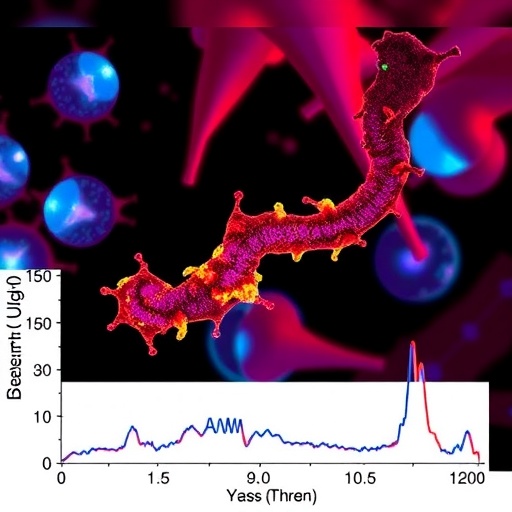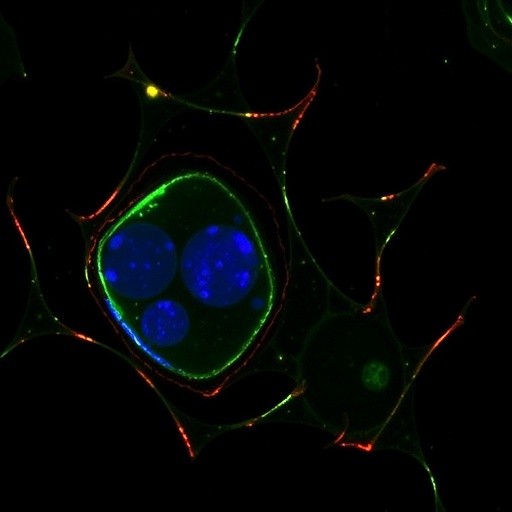In the relentless pursuit of precision medicine, a groundbreaking development in microrobotics promises to revolutionize targeted drug delivery. Researchers at the University of Michigan and the University of Oxford have unveiled a novel class of microrobots—termed permanent magnetic droplet-derived microrobots (PMDMs)—that can be precisely steered within complex biological environments to administer therapeutics exactly where needed. This innovation addresses a key limitation of conventional intravenous drug delivery, which notoriously directs less than one percent of administered drugs to the intended tissue, often causing systemic side effects and reduced efficacy.
The PMDMs are uniquely fabricated using microfluidic techniques that generate bimaterial droplets composed of a gel capable of carrying pharmaceutical agents and a magnetic component that enables remote control. These microrobots measure approximately 0.2 millimeters, about the width of two human hairs, allowing them to navigate fragile and convoluted anatomical spaces such as the intestines or joint cavities. The manufacturing method leverages intersecting flows of gel laden with magnetic particles and immiscible oil, producing uniform droplets with distinct magnetic and gel hemispheres—the foundation for controlled motion and drug release.
.adsslot_dIov2zUpWT{ width:728px !important; height:90px !important; }
@media (max-width:1199px) { .adsslot_dIov2zUpWT{ width:468px !important; height:60px !important; } }
@media (max-width:767px) { .adsslot_dIov2zUpWT{ width:320px !important; height:50px !important; } }
ADVERTISEMENT
Beyond gastrointestinal applications, the research team also explored intra-articular deployment within a human knee model. In this scenario, the microrobots were released in an accessible region and then magnetically maneuvered to otherwise inaccessible joint spaces, where they effectively dispensed their payload before returning to the entry point for retrieval. This minimally invasive approach could profoundly impact the treatment of joint diseases such as arthritis by reducing systemic exposure and enhancing localized therapeutic effects.
A central technological leap lies in the microrobots’ motion modalities. By controlling the frequency of the external magnetic field, the PMDMs can perform intricate locomotion patterns including walking, crawling, and swinging, closely mimicking biological inchworm movements. Even more impressively, these microrobots can reversibly assemble into inchworm-like chains or disassemble to traverse narrow passages—offering unprecedented adaptability in maneuvering through vascular or tissue obstructions.
The theoretical frameworks supporting the experimental findings are grounded in high-fidelity simulations that predict microrobot dynamics under varying magnetic stimuli. These computational models simulate complex obstacle courses that mimic biological environments, enabling optimization of operational parameters to achieve maximum navigational efficiency and payload delivery precision. This synergy between simulation and experiment epitomizes a forward-looking approach combining soft robotics with materials science and biomedicine.
Looking ahead, the research team intends to explore novel microrobot designs with enhanced navigational capabilities suited to increasingly complex biological milieus. By experimenting with particles possessing different physical and chemical affinities in emulsions, they aim to unravel the inter-particle interactions that dictate swarm behavior under magnetic fields. This exploration may give rise to microrobot collectives capable of coordinated tasks far exceeding the abilities of individual units.
This study marks an important milestone in the intersection of nanotechnology, bioengineering, and robotics, signifying a future where microrobots can be custom-tailored for multifaceted biomedical interventions. The modularity and programmability of the PMDM concept open avenues for precision therapies across a variety of diseases, ranging from localized inflammatory conditions to targeted cancer treatments.
The collaborative effort bridging institutions in the United Kingdom and the United States exemplifies interdisciplinary innovation. Supported by numerous funding bodies including the University of Oxford, the China Scholarship Council, and the U.S. National Science Foundation, the project also capitalized on advanced computational resources at Purdue University and the University of Michigan, showcasing how modern scientific infrastructure accelerates discovery.
As the technology matures, the vision of deploying swarms of microrobots to deliver cocktails of drugs at multiple sites within the body comes into sharper focus. Such capability could transform therapeutic paradigms, enhancing drug efficacy while minimizing side effects by avoiding systemic exposure. The implications for managing chronic diseases such as IBD and arthritis, where localized drug action is paramount, are particularly promising.
The full findings of this pioneering research are documented in a recent publication in Science Advances. By combining experimental rigor with state-of-the-art simulations, the study lays a robust foundation for the next generation of intelligent, programmable microrobotic devices that hold the promise of reshaping medicine.
Subject of Research: Animal tissue samples
Article Title: Permanent magnetic droplet-derived microrobots
News Publication Date: July 31, 2025
Web References:
https://doi.org/10.1126/sciadv.adw3172
http://dx.doi.org/10.1126/sciadv.adw3172
References:
Permanent magnetic droplet-derived microrobots, Science Advances, DOI: 10.1126/sciadv.adw3172
Keywords:
Health and medicine, Health care, Human health
Tags: ex vivo models in drug researchinnovative medical technologiesmagnetic droplet-derived microrobotsmicrofluidic techniques in medicinemicrorobotics in healthcaremicrorobots in drug deliverynavigating complex biological environmentsPrecision Medicine Advancementsreducing systemic side effects in treatmentsremote-controlled drug deliverytargeted drug administrationtherapeutic interventions for IBD





